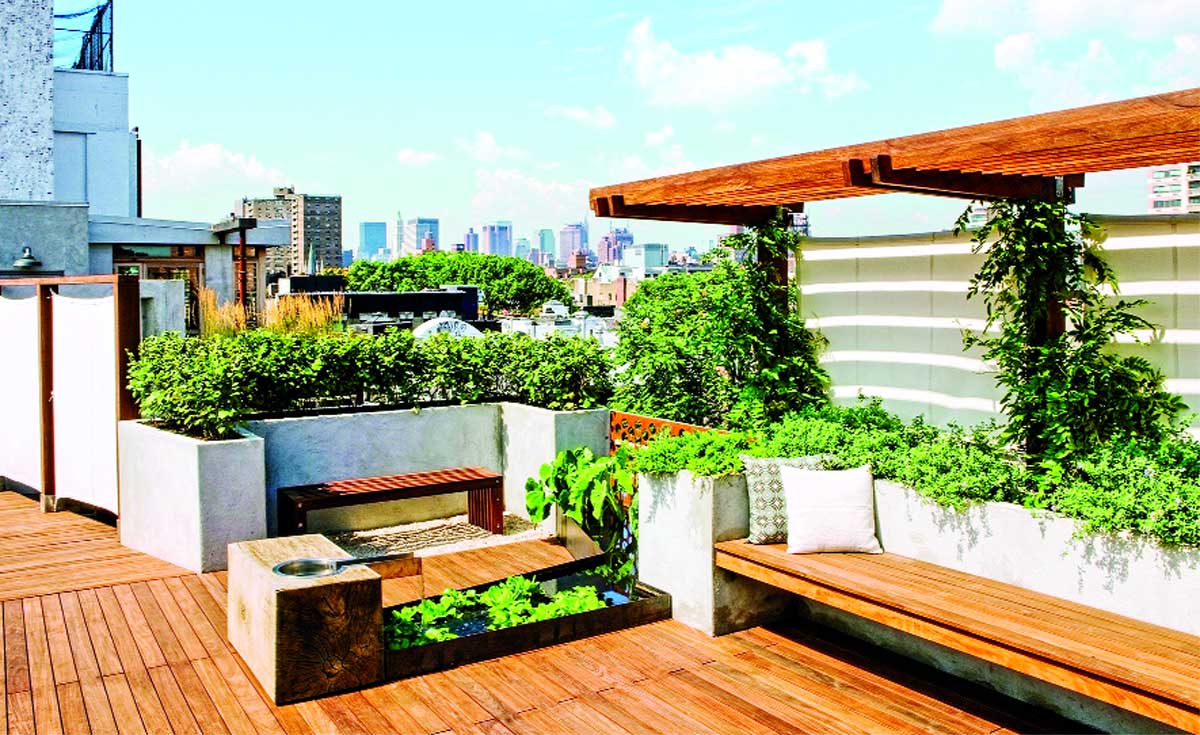Balbir Dhotra and Satesh Kumar
A roof garden is a type of garden situated on a roof of a building. This type of garden can be on top of building, taking care of its own waste and water supply. With hydroponics, and other methods, it is easy to expand the numerous possibilities of vegetable gardening on roof tops. A good way to accomplish this is by reducing the tremendous weight or soil needed. This is why planting in containers are prevalent in these gardens. Cement pots may be too heavy for the roof; hence plastic pots or half cutted plastic drums are suggested for the purpose.
Living in small-sized apartments can have vertical gardening or square foot gardening. Vertical gardening is planting with the use of living walls. It uses lesser space than the traditional square foot gardening method. Hence, terrace gardening is a kind of indoor gardening that entails taking care of indoor plants. One of the best ways to create more space in the house is to utilize outdoor space more effectively. Many modern houses can make their rooms look larger by using glass walls and other means to visually extend the room into the garden. A terrace can be an inviting outdoor room if vines, fences, shade plants, vegetables, flowers and shrubs are used as well. Vines can be used on a roof to give a restful appearance. Additionally, vines like grape vines provide more shade in hot weather and drop their leaves at the start of cooler weather.
They provide their fruit as a bonus as well. Fast-growing variety of vines must be selected. Grape, hyacinth, and gourd vines like cucumber, bitter gourd, bottle gourd, pointed gourd etc are most suitable.
Many vegetables lend themselves well to container gardening and can be quite productive. Almost all vegetable can be adapted to growing in pots/containers but it is depending upon the size of the pots/containers.
Vegetables that take up little space, such as carrots, radish and lettuce, or crops that bear fruits over a long period of time, such as tomatoes and peppers, are perfect for container vegetable gardens. Vegetables like tomatoes, cucumber and some parsley or green onion can be jointly grown all in a large (24-30″) container. They grow well together and have the same water and sun requirements. There must be enough space for them to grow and choose the soil and site with care. Although any variety can be grown in a container, but compact plants/varieties are most suited.
Advantages
An aesthetically pleasing vegetable garden will make people feel happier. Aside from the decorative benefits, these gardens actually relieves stress, provide cooling effect to the house.
It provides fresh vegetables/flowers for entire family and offers nice opportunity to enjoy leisure time along with recreational and architectural creativity.
The garden provides a great boost to health and helps to reduce stress levels substantially
The maintained garden adds to the value of home and can provide a great social meeting place
It can also provide a great hobby to carry out in spare time.
Roof gardening Tips
Roof:
The roof must have ample space and strong enough to carry the garden weight along with efficient drainage system with no water leaks.
Waterproofing:
This is very important as the drain out water from pots/containers or raised beds always keep the roof moist. In water proofing, always use materials such as slate stone, PVC compounds, fibre glass coating, bitumine etc.
Choice of plants:
All the vegetables can be successfully grown in containers/pots provided the size of the pot should be large enough to provide adequate space and nutrients for roots to grow and support the plant.
Soil mixture: Peat moss mixed with manure and garden earth is best medium for growing plants as it does not exert pressure onto your building.


